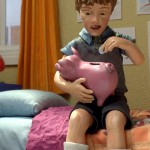$9.99: animation on a budget
 Tatia Roisenthal’s Feature $9.99 cost a little more than the title suggests, but it was still a triumph of low-budget stop-motion passion. Miguel Gonzalez writes.
Tatia Roisenthal’s Feature $9.99 cost a little more than the title suggests, but it was still a triumph of low-budget stop-motion passion. Miguel Gonzalez writes.
Tel Aviv-born, New York-based Rosenthal adapted two of Israeli writer Etgar Keret’s short stories, Breaking the Pig and Crazy Glue. Keret found a creative connection with Rosenthal and proposed they work together on a feature film script, which would combine several of his stories and centre them around an apartment building. Rosenthal received a U$100,000 production fund award from New York University, which she used to create A Buck’s Worth, a short promo for their feature project – which, despite being non location-specific, they thought would be produced in the US.
But the project would receive support from a very different source. In 2005, Australian producer Emile Sherman (Disgrace, Candy) was in Tel Aviv and got in touch with Keret, who showed him the script. Sherman then contacted Rosenthal and they saw the potential of the film as an Australian-Israeli co production, the first ever since the official treaty was signed in 1997.

